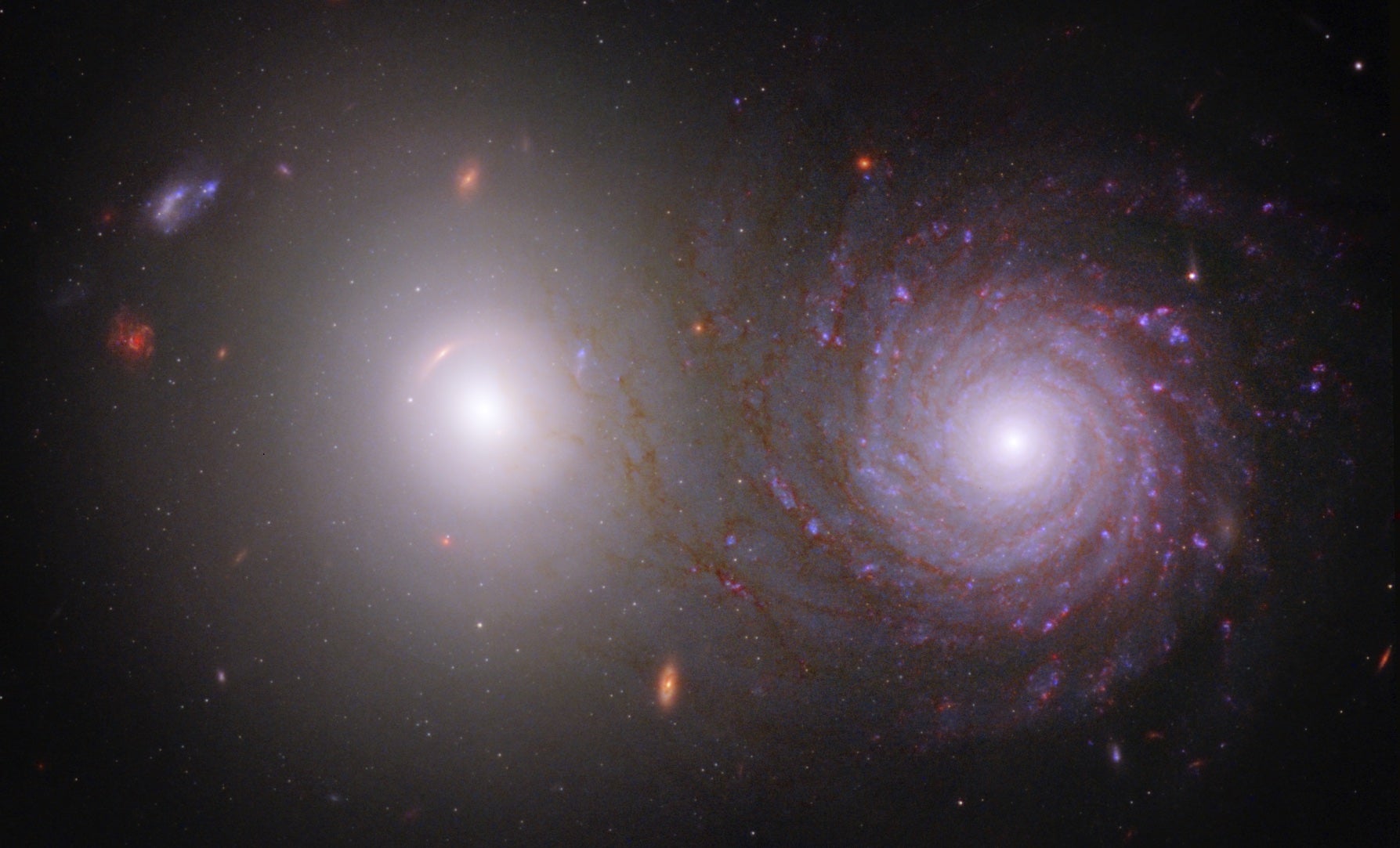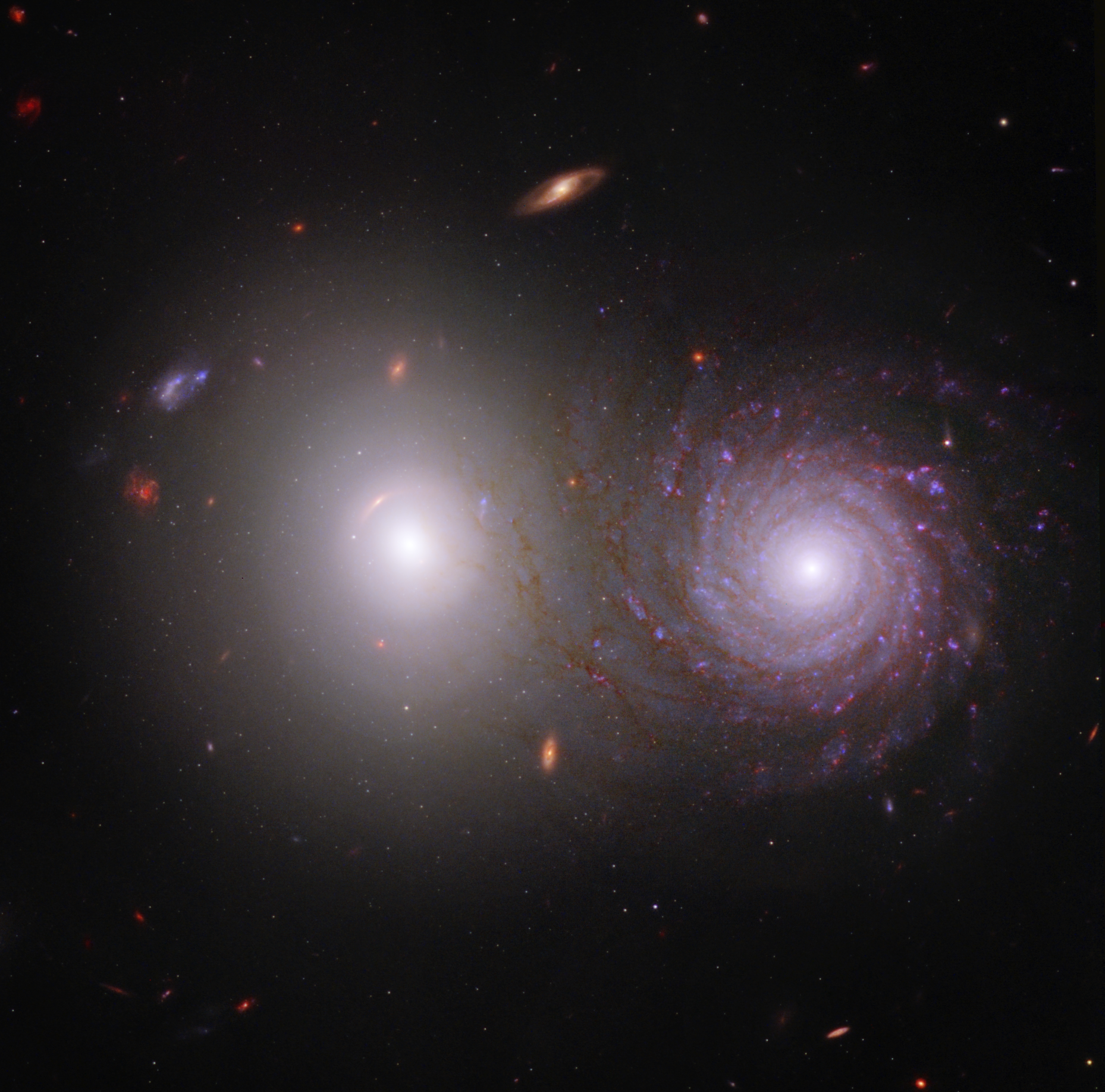Nasa’s Webb and Hubble telescope team up to create astonishing image of a pair of galaxies
By combining observations in different wavelengths of light, the Hubble-Webb team up allowed scientists to see new details in distant galaxies.

What’s better than one iconic space telescope? Two iconic space telescopes.
By combining observations from both the James Webb and Hubble Space Telescopes, Nasa just revealed never before seen details of two distant galaxies, a bright, white elliptical galaxy, and the dusty limbs of a spiral galaxy. The pair of galaxies known as VV 191 are seen in near-infrared light from Webb and ultraviolet light from Hubble.

“We got more than we bargained for by combining data from NASA’s James Webb Space Telescope and NASA’s Hubble Space Telescope!” a team of Webb telescope scientists led by Rogier Windhorst of Arizona State University wrote in a blog for Nasa. “Webb’s new data allowed us to trace the light that was emitted by the bright white elliptical galaxy, at left, through the winding spiral galaxy at right – and identify the effects of interstellar dust in the spiral galaxy.”
The arms of the spiral galaxy appear in such fine detail in the image, Dr Windhorst and colleagues write, because of Webb’s ability to pick up interstellar dust in those arms. Although the spirals appear to overlap the central bulge of the white elliptical galaxy, the two galaxies are not actually so close as to interact directly.
Astronomers study galactic pairs like VV 191 to better understand the dust in galaxies.
“Understanding where dust is present in galaxies is important, because dust changes the brightness and colors that appear in images of the galaxies,” the researchers write. “Dust grains are partially responsible for the formation of new stars and planets, so we are always seeking to identify their presence for further studies.”
The combined image also offers a galactic Easter Egg: at about 10 o’clock on the face of the white elliptical galaxy can be seen a reddish arc. That’s the image of a far more distant galaxy, it’s light magnified by the gravity of the foreground galaxy in a process known as gravitational lensing.
“These images of the lensed galaxy are so faint and so red that they went unrecognized in Hubble data, but are unmistakable in Webb’s near-infrared image,” the researchers write. “Simulations of gravitationally lensed galaxies like this help us reconstruct how much mass is in individual stars, along with how much dark matter is in the core of this galaxy.”
Join our commenting forum
Join thought-provoking conversations, follow other Independent readers and see their replies
Comments